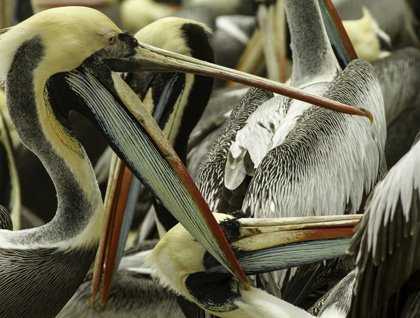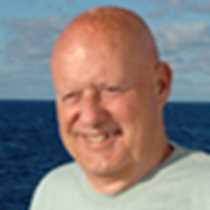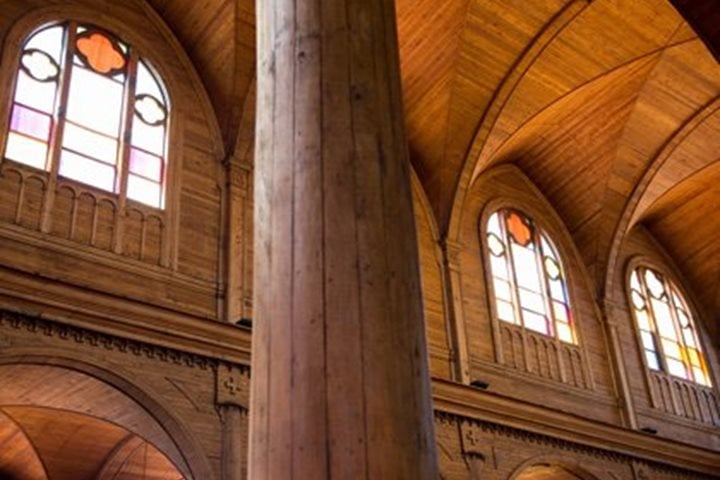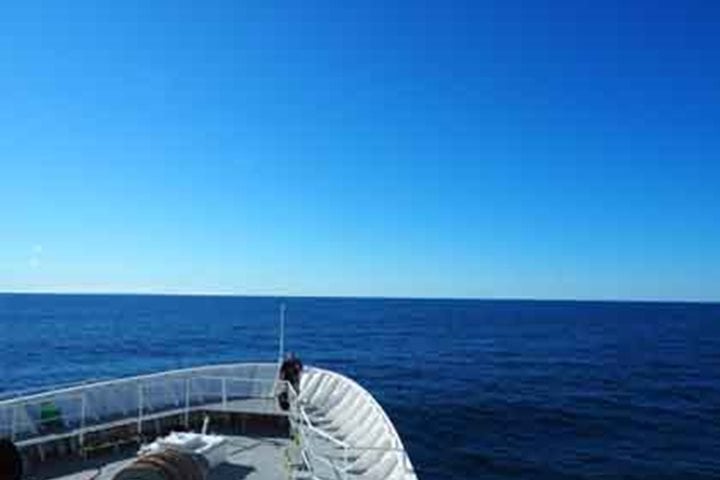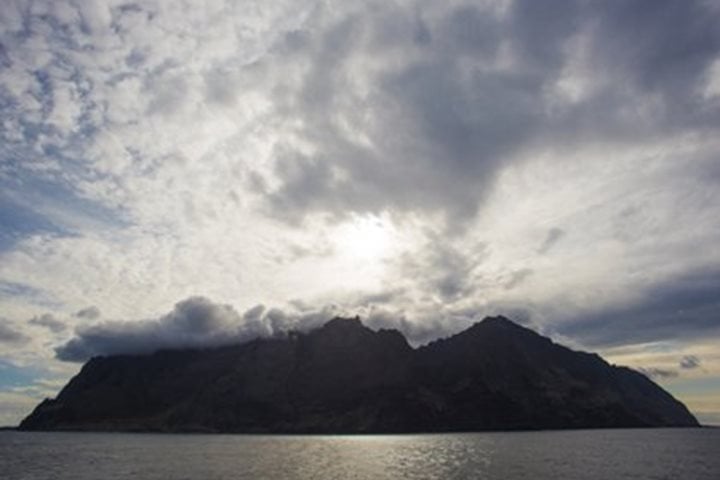Today was our first day in Peru. Immediately upon stepping outside we could feel a tremendous change in the environment, as the air was very cool and a cool breeze was blowing from the southeast. We were in the southeast trades and in the Peru (formerly Humboldt) Current which brings cold water from Antarctica but which also carries cold water upwelled from deep in the ocean along the coast of Chile and Peru. In the early morning we experienced the fog associated with the upwelled cool water, locally called garua, which is typical of the weather from June to November here.
We anchored near a small island called Isla Lobos de Tierra, which lies about eight nautical miles off the coast of northern Peru. Here we were able to go ashore and walk freely anywhere we wanted on the island which is a nesting ground to thousands of seabirds. Most numerous were the beautiful Peruvian pelicans which were arrayed in their spectacular breeding plumage and were engaged in nest building and courting within huge flocks along the coast. There were also Peruvian boobies and blue-footed boobies nesting on the island and large groups of guanay cormorants. The island had once been the site of a large guano mining operation and some of the equipment and buildings from that era remain. In 1863, when guano mining began, the resource was estimated to be 7 million metric tons, but this turned out to be an overestimate.
These huge flocks of seabirds have built extensive guano deposits on the offshore islands of Peru and Chile. The birds congregate here because of the rich food supply in the surrounding waters, most prominently the Peruvian anchoveta, which in its peak in the 1960’s was responsible for 20% of the all the fish caught in the world ocean. The fish stock has since been depleted by over-fishing and fishing during El Niño events, but the waters near the island are still incredibly rich.
We also took Zodiac cruises along the coast where we were able to see both the seabirds and the South American sea lions swimming about. It was altogether a most enjoyable morning. We re-boarded National Geographic Explorer and headed south again. In the afternoon we enjoyed presentation by our guest musician, Susana Baca, who joined us last evening as well as a presentation by Tato Antezana, our Chilean oceanographer, who talked about the planktonic life in the open ocean.

